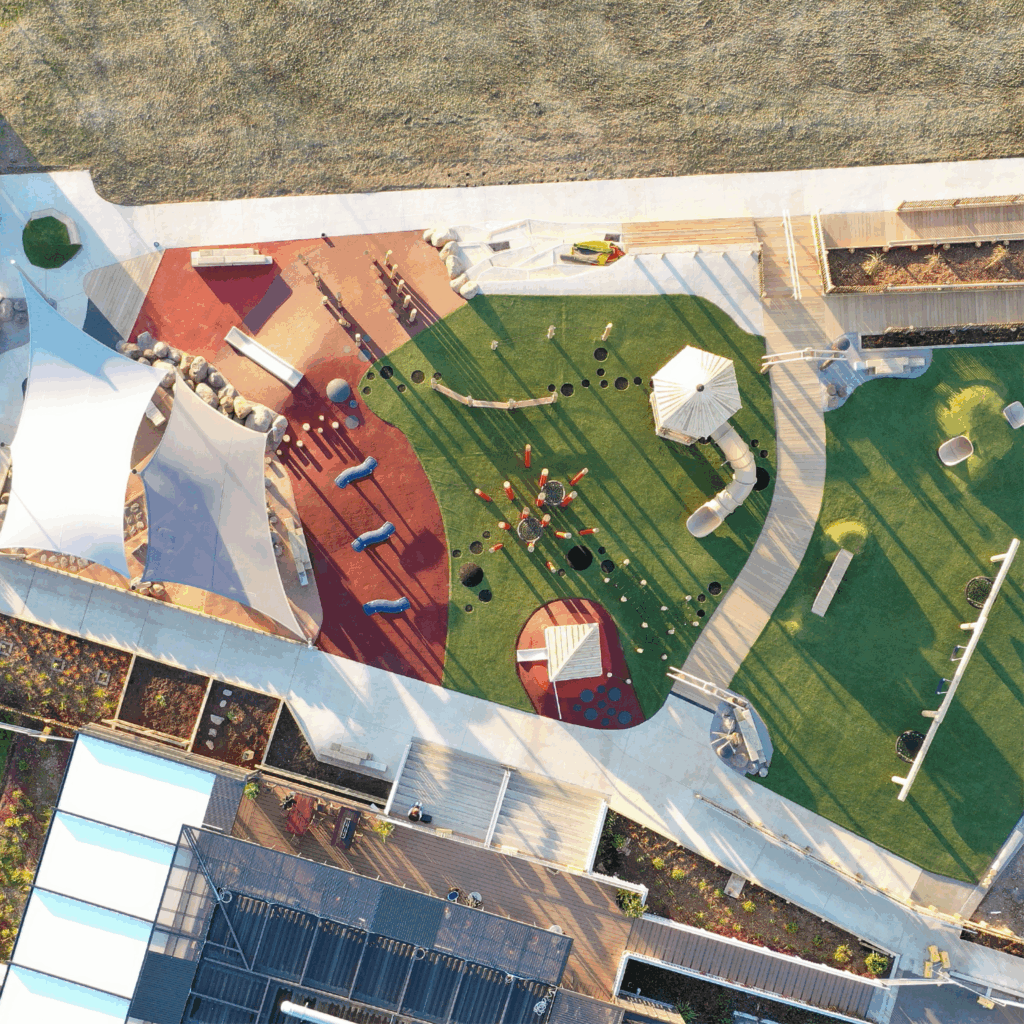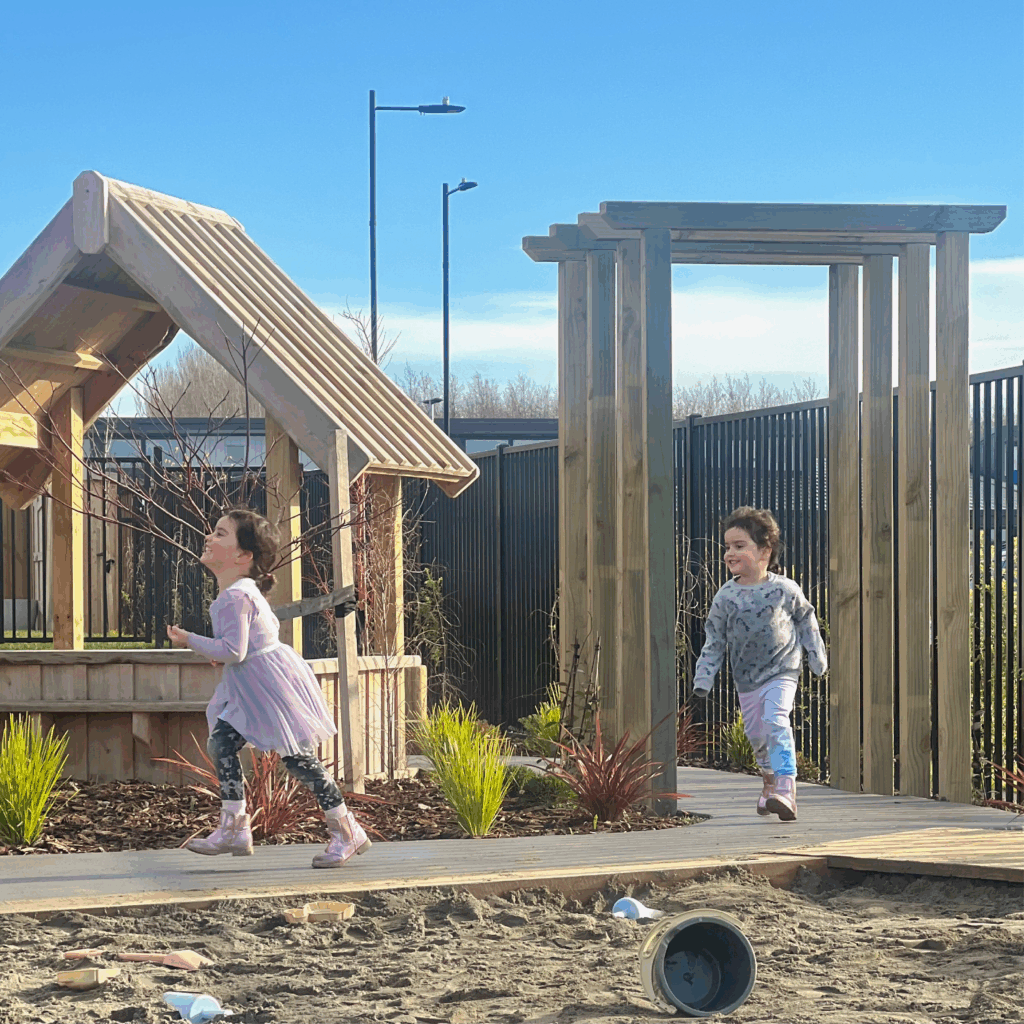Inclusive play is a transformative concept that ensures every child, regardless of ability, has the opportunity to engage in meaningful and enjoyable play experiences. For New Zealand parents, principals or childcare leaders, creating these environments means fostering a culture where all children can play, learn and grow together.
This approach not only supports childhood development but also helps build stronger, more connected communities. Let’s explore what inclusive play is, how it empowers children, and the role of inclusive outdoor play features in bringing these spaces to life.


What is Inclusive Play?
Inclusive play breaks down physical, sensory and social barriers so every child can participate. At its core, it embraces diversity and creates opportunities for children to connect, collaborate and share experiences, regardless of their abilities or backgrounds.
For a school or community playground to be truly inclusive, it must go beyond basic accommodations. It needs to consider the needs of children with mobility challenges, sensory sensitivities or developmental differences, while also offering engaging experiences for their peers.
This means integrating inclusive outdoor play equipment, structures and activities that support a wide range of abilities, ensuring no child feels excluded.
Empowering Children of All Abilities
Inclusive play isn’t just fun, it’s empowering. It supports children in meaningful, lasting ways.
Building Confidence
Inclusive play spaces allow children to take on challenges at their own pace. Whether they’re climbing an adaptive structure or navigating a sensory path, children gain confidence as they accomplish these tasks tailored to their abilities. This sense of achievement helps them feel capable and valued.
Fostering Independence
Well-designed equipment and activities encourage self-reliance. Features like ramps, sensory panels and accessible swings allow children to explore and play on their own terms, promoting autonomy and self-discovery.
Encouraging Social Connections
Bringing children of all abilities together fosters friendship and teamwork. Activities and equipment designed for collaborative group play helps children build friendships, practice teamwork and develop empathy for one another.
Developing Skills
Inclusive play plays a crucial role in childhood development, supporting physical, cognitive and emotional growth. From enhancing motor skills on an accessible play structure to stimulating creativity through sensory panels, inclusive environments offer countless opportunities for learning through play.
What Are Some Examples of Inclusive Play?
Inclusive play for children can be experienced in many ways through thoughtfully designed outdoor environments. These spaces encourage unstructured, child-led exploration while catering to a variety of abilities and sensory needs.
Multi-Sensory Play Features
Inclusive play environments often include features that engage multiple senses such as sand pits, water play zones or textured finishes. These spaces are especially beneficial for children with sensory processing challenges, offering both calming and stimulating experiences.
Social Play Opportunities
Fixed features like outdoor musical instruments, wide platforms and group seating areas encourage children of all abilities to play side-by-side, fostering communication, collaboration and friendships.
Creative Exploration
Spaces that support open-ended play such as nature-inspired elements, loose surface textures and imaginative structures empower children to invent their own games, stories and experiences, regardless of their physical or cognitive abilities.
The Role of Inclusive Outdoor Play Equipment
Creating truly inclusive play spaces starts with thoughtful design and the right equipment. Inclusive outdoor play equipment caters to diverse needs while encouraging shared play experiences. Key features include:
Tactile Panels
These interactive elements stimulate touch and sight, providing a multi-sensory experience that engages children with sensory sensitivities.
Accessible Swings
Adaptive swings such as bucket seats or high-backed models ensure children with mobility challenges can enjoy the joy of swinging safely and comfortably.
Sensory Paths
These playful pathways combine textures, colours and sounds to create an engaging and exploratory experience for all children.
Ramps and Wide Platforms
Essential for wheelchair users, these features ensure that all children can access and enjoy the entire inclusive playground with ease and confidence.
When we incorporate these elements into our inclusive school playgrounds, community parks and childcare centres, we create richer play experiences that reflect the diversity of our tamariki.
Championing Inclusive Play for Children in New Zealand
By advocating for inclusive playgrounds, supporting local initiatives and choosing thoughtfully designed inclusive outdoor play equipment, we can ensure every child has the chance to play, learn and thrive in their outdoor environment.
Let’s work together to make every playground a place where all children feel welcome, capable and valued.
Book a consultation with our team today and take the next step toward building an inspiring inclusive play space.